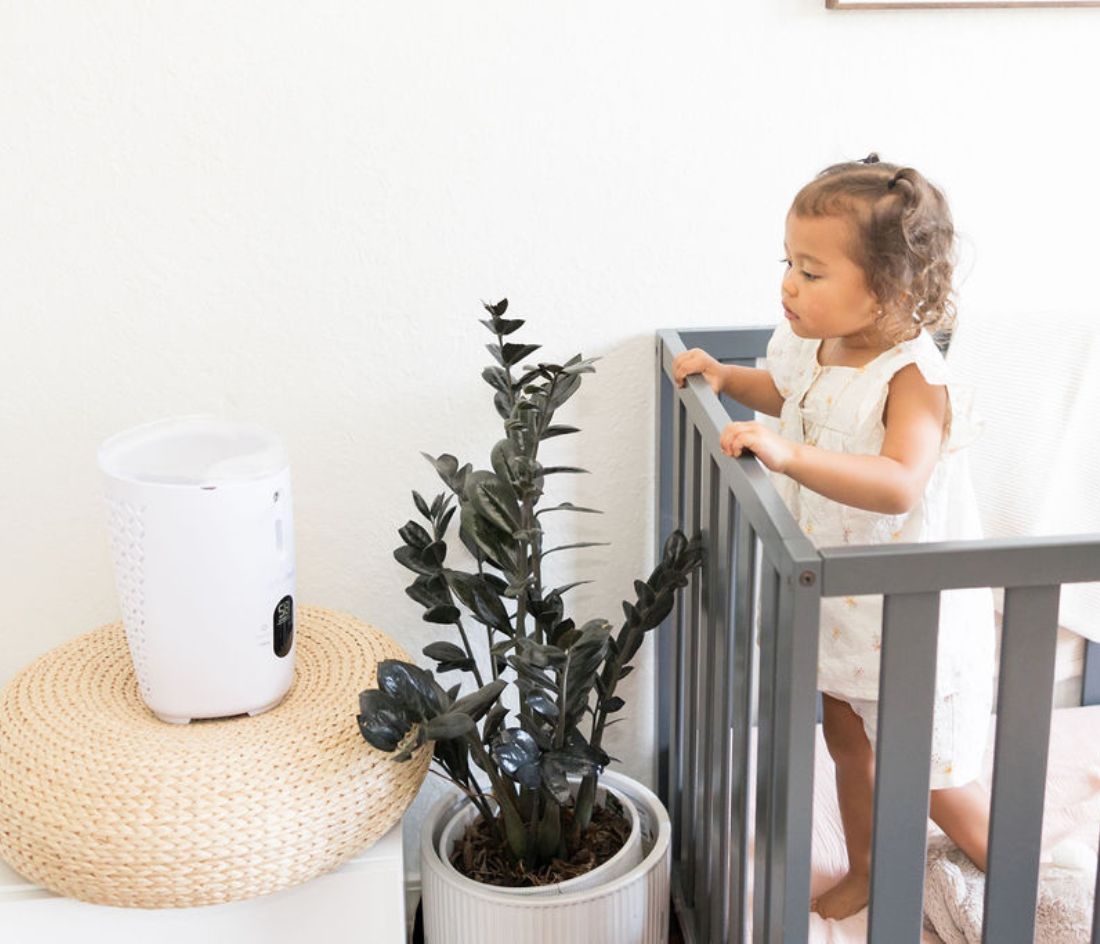Guest Post by Katy Fleming, MA, LPC, BSN, RN
When respiratory symptoms appear, it’s challenging to decipher between RSV, the flu, and other viruses. As a parent, it’s difficult to determine how best to help your sick child.
On the surface, respiratory viruses seem quite similar. Your kiddo starts sneezing, coughing, and just doesn’t want to get out of bed. What should you do next?
Some key differences such as the onset, duration, and type of symptoms will provide some answers to this puzzle. Let’s review the similarities and differences between the respiratory syncytial virus (RSV), the flu, COVID-19, and the common cold.

Is It RSV, Flu, COVID-19, or a Cold?
As the school year begins, respiratory illnesses rise and emergency rooms begin to overcrowd. The differences between these similar viruses give insight into preventative care, effective treatment, and expectations for your child.
Your child may experience symptoms of a runny nose, fatigue, cough, fever, or congestion with any of these four illnesses. Below are specific differences between each virus to better identify the problem.
RSV
Most children contract RSV, or Respiratory Syncytial Virus, by their 2nd birthday. In addition to the symptoms mentioned above, sneezing is common for children struggling with RSV. In addition to sneezing, excessive mucous and wheezing point more toward RSV than the other viruses.
RSV may lead to bronchiolitis, an inflammation of the small airways within the lungs. This inflammation causes the wheezing that some children experience with RSV.
Symptoms typically peak between days 3-5 and RSV lasts approximately 5-7 days on average.

Flu
Sneezing isn’t solely observed in RSV. The flu may cause a fever, stuffy nose, sneezing, shortness of breath, sore throat, or headache.
A major difference between the flu and other respiratory illnesses is the onset of symptoms. When your child has the flu, it may seem as if they suddenly want to sleep rather than play. Whereas some viruses cause a slow progression, the flu often feels like a sudden hit.
A CDC research study found that children are the most likely to get sick from the flu. Another interesting fact, infants may be contagious with the flu longer than other age groups.
The onset of symptoms usually begins between 1-4 days after exposure.
COVID-19
Medical professionals, researchers, and scientists continue to learn more about COVID-19. The most notable symptom specific to COVID is a sudden loss of taste and sense of smell. However, this symptom is reported less often in children.
As we learned through the pandemic, COVID is highly contagious and a person may begin spreading the virus 2-3 days before symptoms begin. People can spread the virus without ever experiencing symptoms themselves.
A variety of symptoms are observed in different people with COVID including coughing, headache, fever, shortness of breath, fatigue, congestion, vomiting, and diarrhea.
Keep in mind, there are vaccinations, treatment, and testing for both the flu and COVID.

Cold
It’s easy to forget about the common cold during the COVID pandemic and the rise of RSV. According to the American Academy of Pediatrics, a healthy child will get approximately 6 colds per year.
Although colds are far more common, the symptoms are typically significantly less severe. A sore throat, sneezing, stuffy nose, cough, or fever are symptoms to expect. Many different types of viruses can cause a cold.
Final Tips
Education is essential not only for parents but also for children. Teach your child how to cover their mouth when coughing or sneezing. Review the importance and steps of proper hand-washing.
If your child has difficulty breathing, shortness of breath, poor feeding, vomiting for more than 24 hours, or a fever above 104 degrees, contact their pediatrician immediately. If your child is under 2 months old, contact the doctor if their fever is 100.4 degrees or higher.
It’s important to not solely rely on signs and symptoms to diagnose your child’s illness. Testing is required to confirm the diagnosis of the flu, COVID, or RSV. Contact your child’s pediatrician to learn more about testing, diagnosis, and treatment.
If you enjoyed this article, you will also love:
- 7 Natural Cold Remedy Myths Debunked
- Germ Hot spots Hiding in Your Home
- 10 Parenting Podcasts to Help Kick Off The New Year
- RSV Vaccine vs. RSV Shot—What Parents Need To Know
- The Dos and Don'ts of Fighting a Fever
As a licensed counselor and registered nurse, Katy approaches freelance writing with years of experience and a unique perspective. Alongside her partner, Katy loves to travel the world and embrace other cultures from volcanoes in Iceland to villages in India.
The Nozebot is a battery-powered suction device designed to clear nasal congestion in babies and children.



